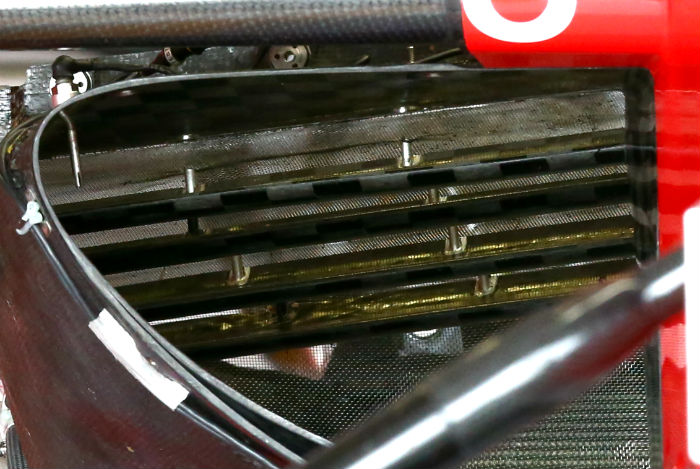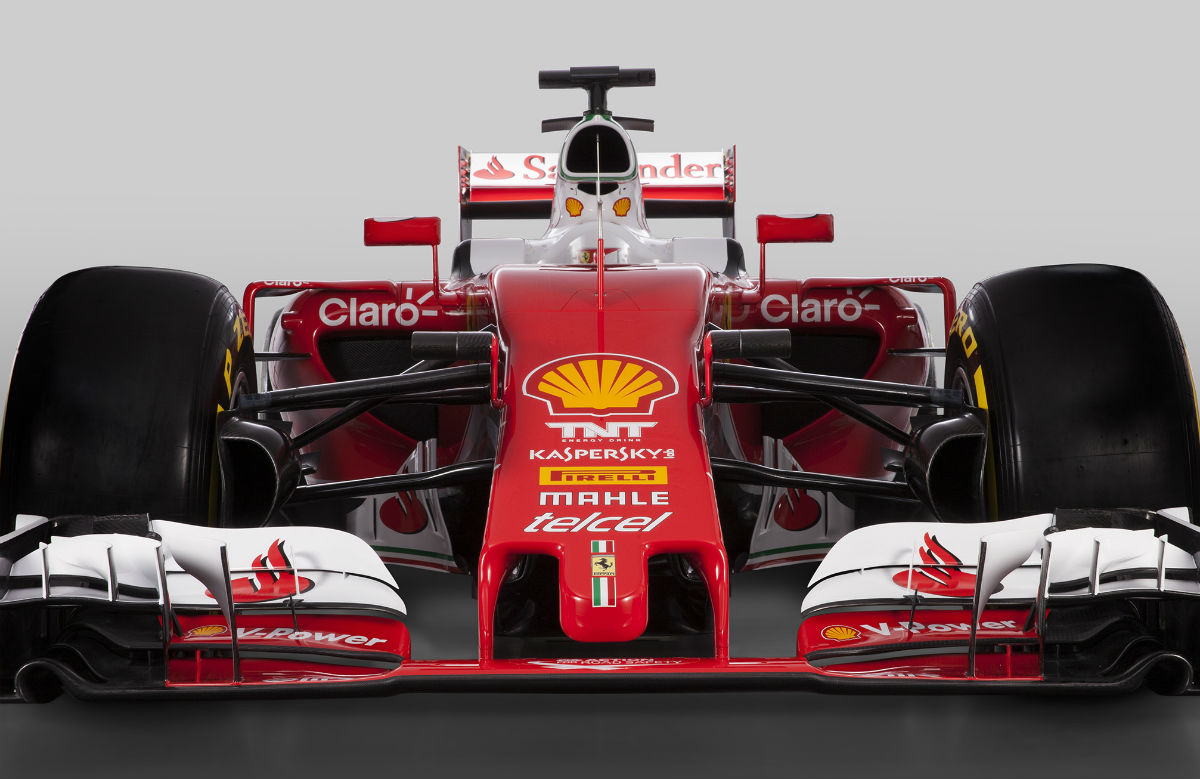The Ferrari SF-16H was revealed in an unconventional way with a live stream directly from the logistics and trucking bay of the Scuderia’s Maranello factory. The new car is a major step in a new direction for the famous Italian team and little of the old car has carried over as they strive to close the gap to Mercedes-Benz.
One of the most distinctive features of the new Ferrari is its roll hoop and airbox. The main roll structure itself has a single central support with a rearward sweep.
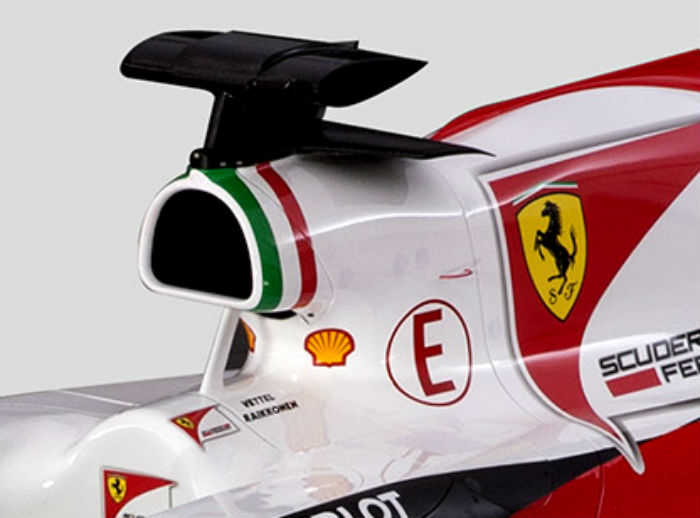
It is a notably different approach to the SF15-T which also had a single support but mounted almost vertically. A cooling duct remains located under the main duct for combustion air.
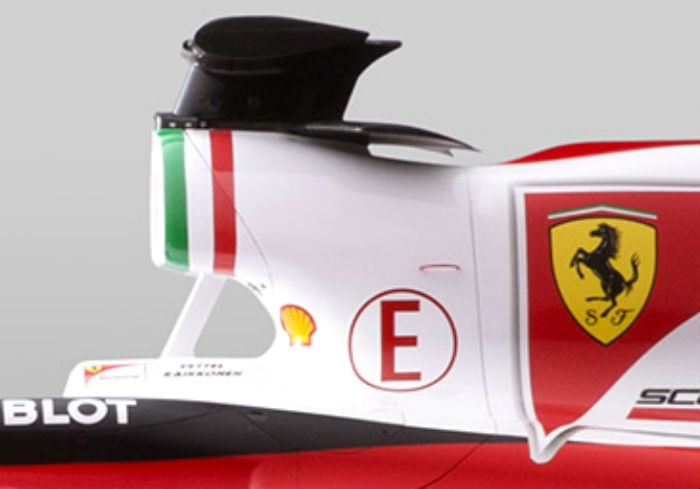
Behind the roll hoop duct the upper surface of the monocoque dips down significantly before the engine cover sweeps upward again creating a kind of dimple in the cars upper surface, at first glance it seems this is something to do with the flow conditioner rearward of the camera housing but it may be there is more to it.

The nose of the car (above) seems to have been inspired heavily by the 2015 Sauber design (below) and appears to be largely identical in concept. It may be that Ferrari has struggled to get a Mercedes style nose through crash tests though comments from the cars designers suggest that this is the intended layout. The front crash structure does appear a bit smaller than that of the ’15 Sauber but the concept is the same.
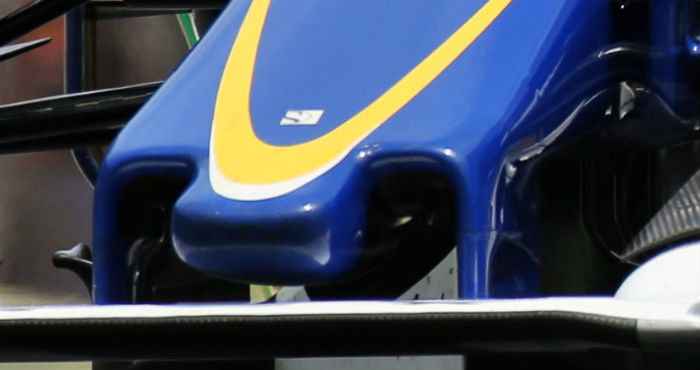
The front suspension of the car shows that Ferrari’s experiment with a pull rod front end has come to an end. It will be interesting to hear what the reasoning for this was as until recently the Italian team swore that the pull rod layout gave aerodynamic gains. Just visible in this image is a dimple on the upper outer edge of the sidepod, this clothes the mandatory upper side impact structure.

The rear suspension of the car remains a pull rod layout. The number of serrations on the outer edge of the rear floor is fascinating and could be the result of additional aerodynmic research by Haas F1, it will be interesting to see if the American car features the same concepts. Note the slight flare on the rear bodywork.
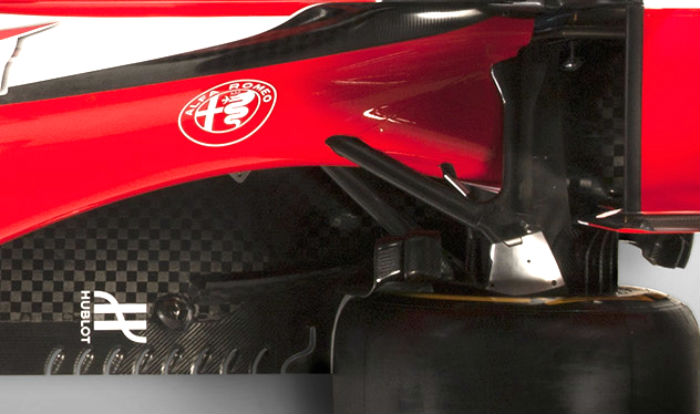
The general suspension leg layout can be seen in this shot as can the flared rear bodywork, more of interest though is the exhaust tailpipe complete with the new additional wastegate pipe. 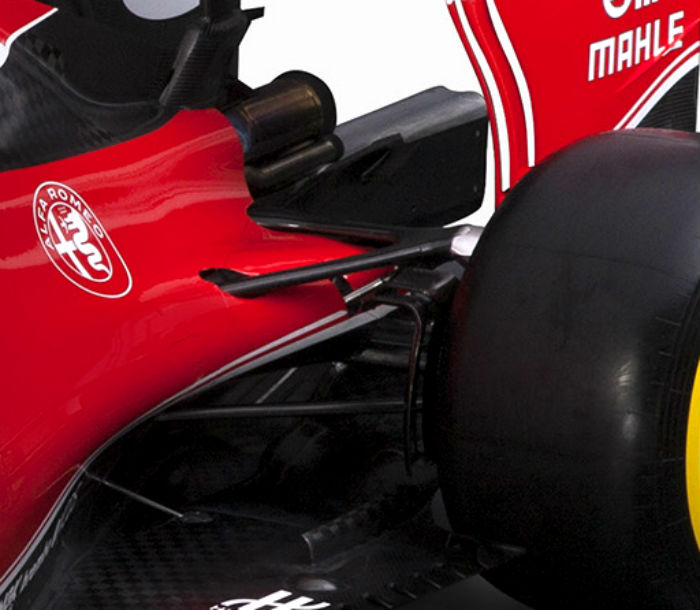
Ferrari has opted for the triple exit layout with one main exhaust exit and twin wastegate exits one each side of the tailpipe. The rear wing mounting is not clear though it is possible that with the new wastegate pipes located where the Y-lon mounts would have been in late 2015 that the support passes through the tailpipe, an approach trialled by Toro Rosso in 2015.
The cooling layout on the car has changed somewhat with the centre line turbo cooling ducts gone altogether. This is likely due to the extensive re-work of the Ferrari power unit, which is thought to now incorporate a variable inlet system, a revised turbocharger and MGU-H, a relocated MGU-K and the intercooler now relocated to a more conventional location (on the 2014 & 2015 power units it was located in the V of the combustion engine.
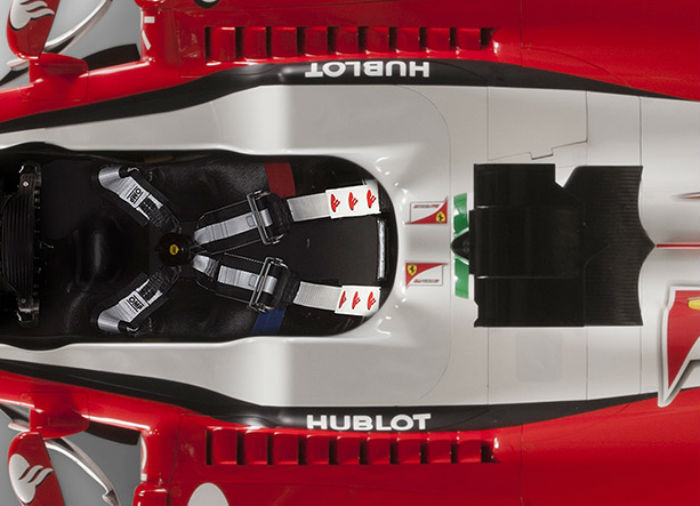
The cockpit features the enhanced head protection as with all 2016 cars, centreline cooling louvres are also now standard. The white seatbelts fitted to the car were introduced in 2014 by Ferrari and were also used in 2015 by Mercedes and McLaren. Produced by OMP they use a Dyneema fibre developed for military applications and have a strength weight ratio of 3.5 kNm/g and a specific weight of 0.97. A weight saving and performance increase on typical lightweight belts. They are white in colour as the cannot be dyed without losing structural properties.
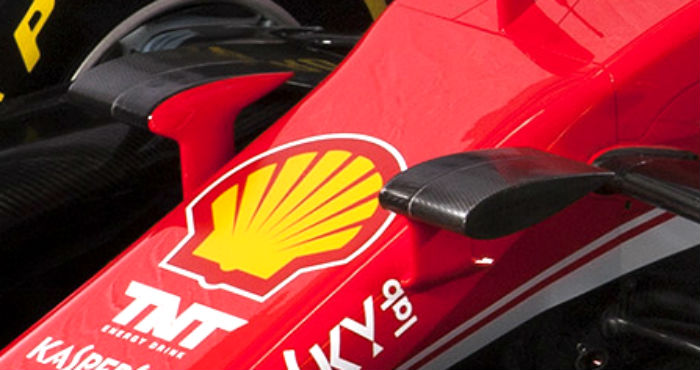
The Ferrari retains its nose cameras on stalks which can bring aerodynamic gains.
Comparing the VF-16 to the Ferrari SF16-H is an interesting exercise, the front wing is essentially identical on both designs –

compare the Ferrari (above) to the Haas (below) the brake duct design is also identical as are the wishbones. The nose concept differs however between the two cars.
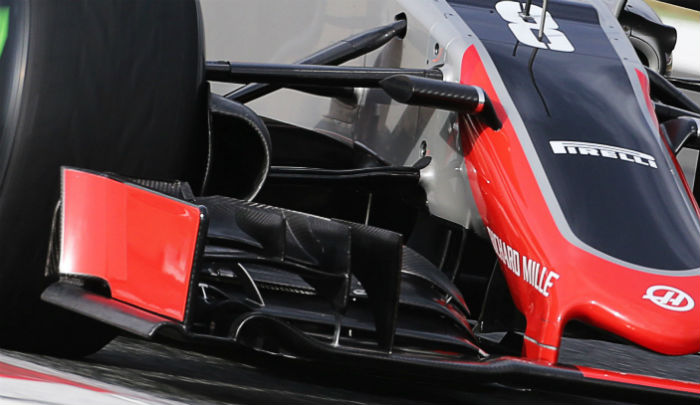
The rear suspension is basically identical between the two cars including the ducts, wishbones, uprights, but the Ferrari has a slightly more complex treatment on its floor (not pictured).

Ferrari (above) and Haas (below) component sharing is the closest Formula 1 has come to customer cars since the Super Aguri team folded but is allowed under new rules introduced at the start of the 2015 season.

At the rear of the car there are similarities but also differences, while both cars share rear impact structures and transmission there are some detail changes between the two.
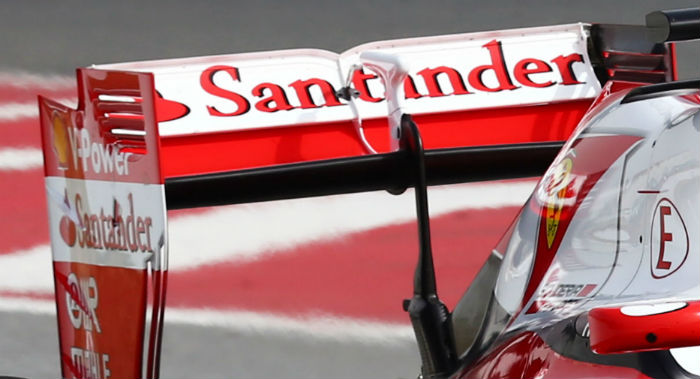
Looking at the rear wing it is largely identical between the two (Ferrari above, Haas below) but note that the rear wing support does differ.
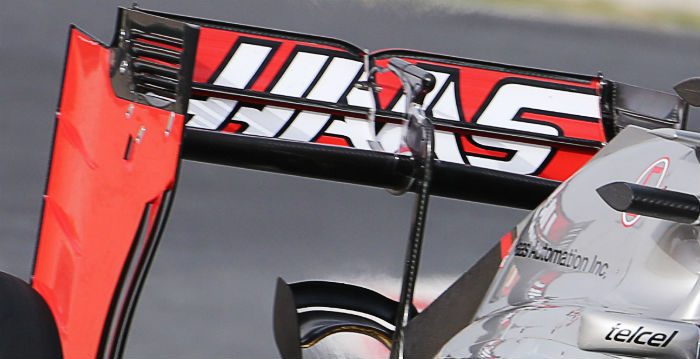
Finally some areas of the car share a general concept but are entirely different designs, the cooling system on the Haas by regulation is bespoke to that design, but looking at the sidepods the impact of the data sharing can be seen.
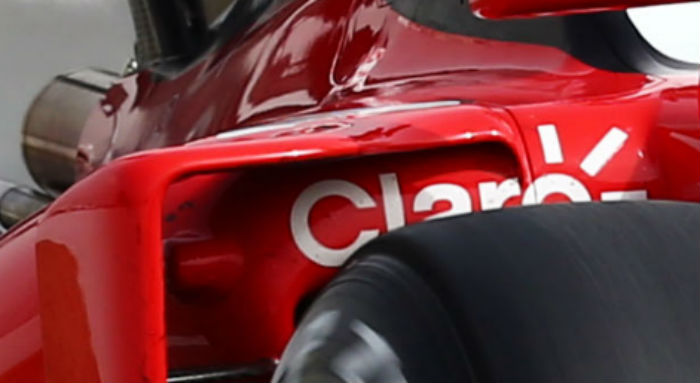
The Ferrari, above has a very similar treatment in terms of the turning vane around the outer edge of the sidepod and the small bump caused by the protruded side impact structure.
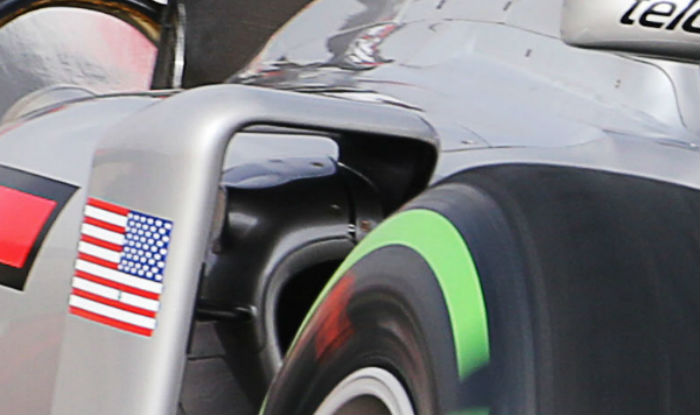
A look at the outer edge of the Ferrari diffuser, note the double layer of elements. It appears that all of the elements have a wing section, some with notable gurneys apart from the lower element of the forward section whis appears to be just a right angle section and the lower rear element which is almost flat.
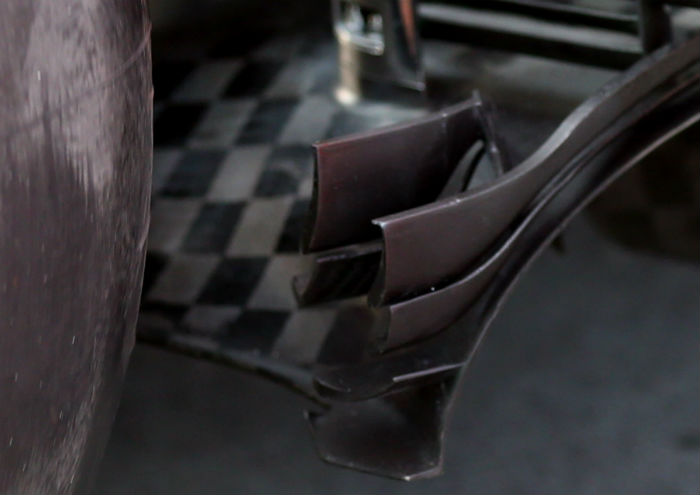
A first look at the front bulkhead of the SF16-H which like many cars features a cover over the mechanical components such as the master cylinders. Note the third element/inerter mounted on the top of the chassis.
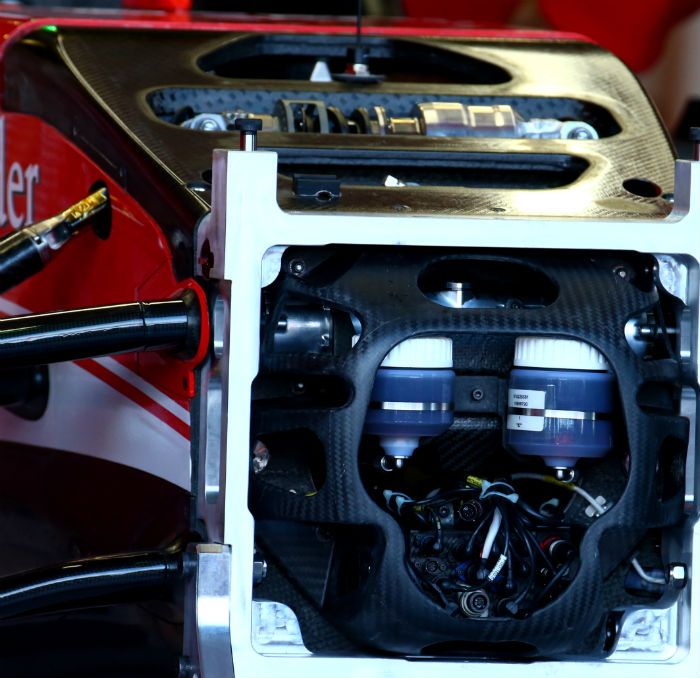
With the composite panel removed from the bulkhead the steering rack can be seen quite clearly.
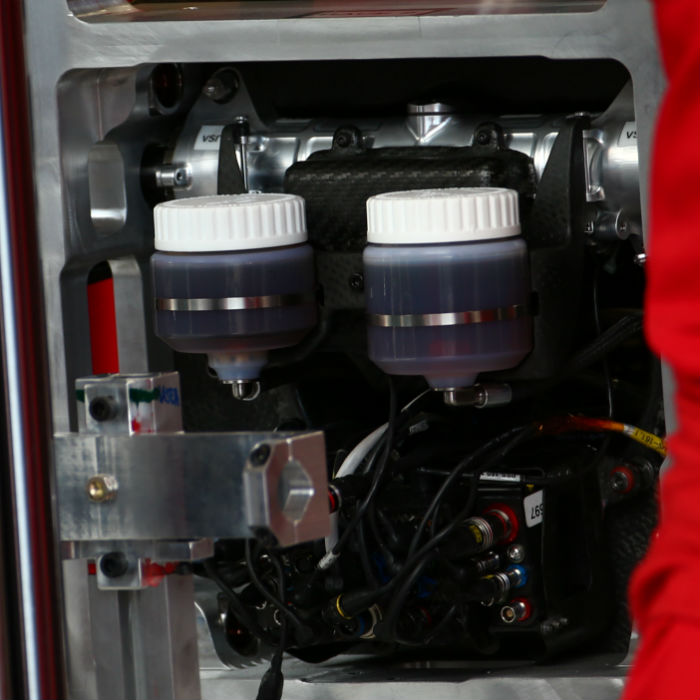
With the engine cover removed it is possible to see the charge air cooler mounted above the rear of the V6 engine.
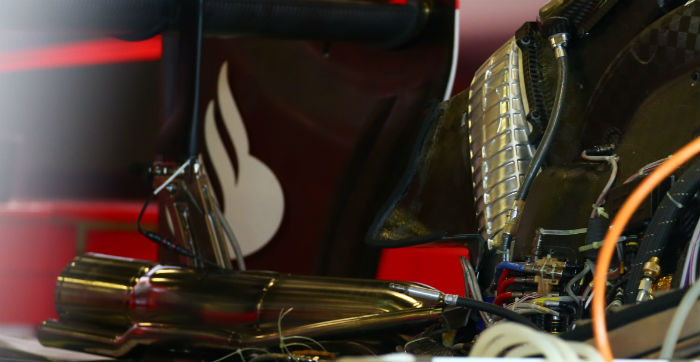
The long waste gate exit pipe is also clear to see.
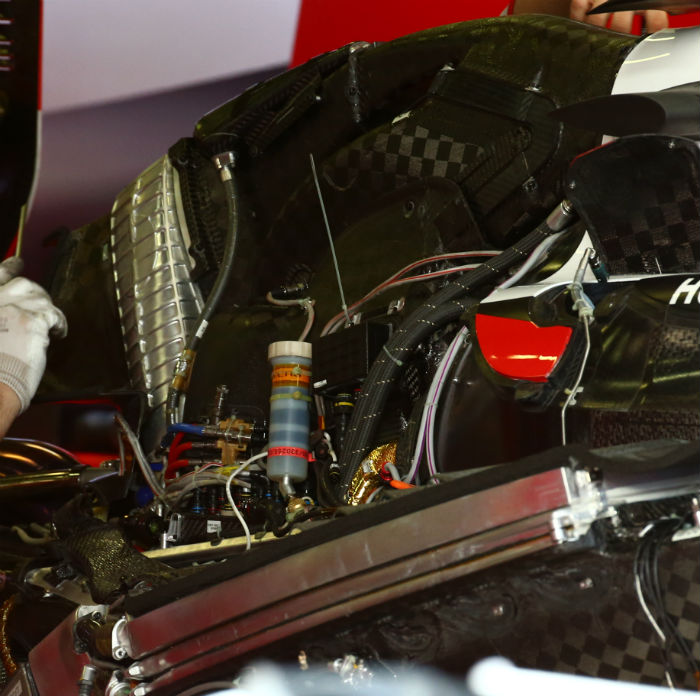
A look at the under chassis ‘ears’ on the Ferrari, note the small forward part. This area is crucial to the aerodynamic performance.

From the rear its possible to see the wing support passing through the exhaust tailpipe.
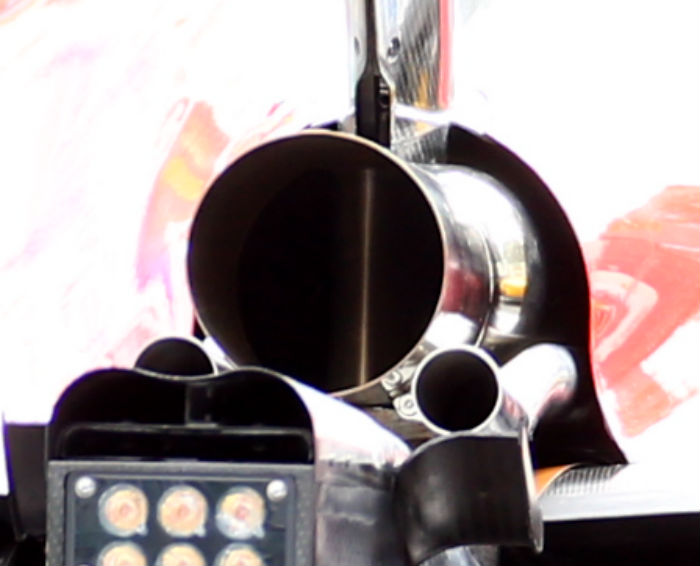
A look at the composite casing of the Ferrari transmission. Note the the rear wing support much wider at the point it passes through the exhaust tailpipe (below).
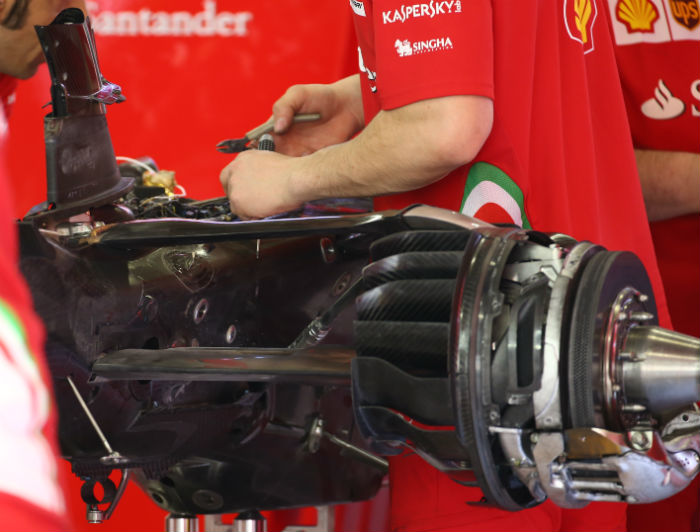
The area under the main right hand side sidepod duct of the SF16-H contains a lot of fluid transfer components. As well as what appear to be MOOG type valves/actuators.

The front brake setup of the SF16-H features a bespoke caliper from Brembo as well a friction material from the same company. Note how the caliper is mounted low on the disc and slightly rearward.
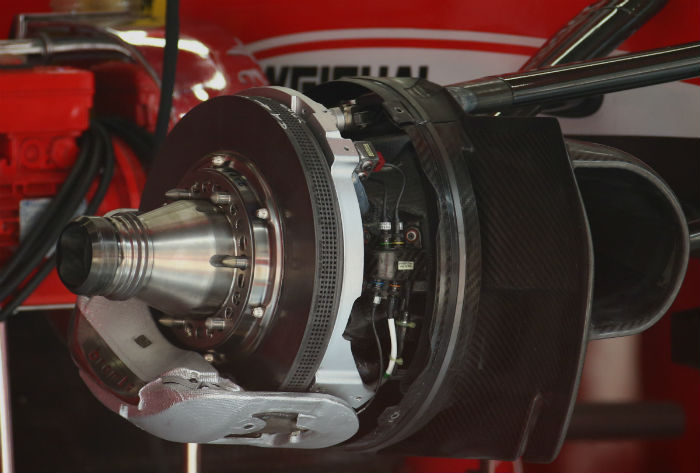
The Ferrari braking system is developed with Brembo and the discs are subjected to aerodynamic development (to optimise cooling) in a special wind tunnel at Brembo’s R&D facility near Bergamo, Italy.
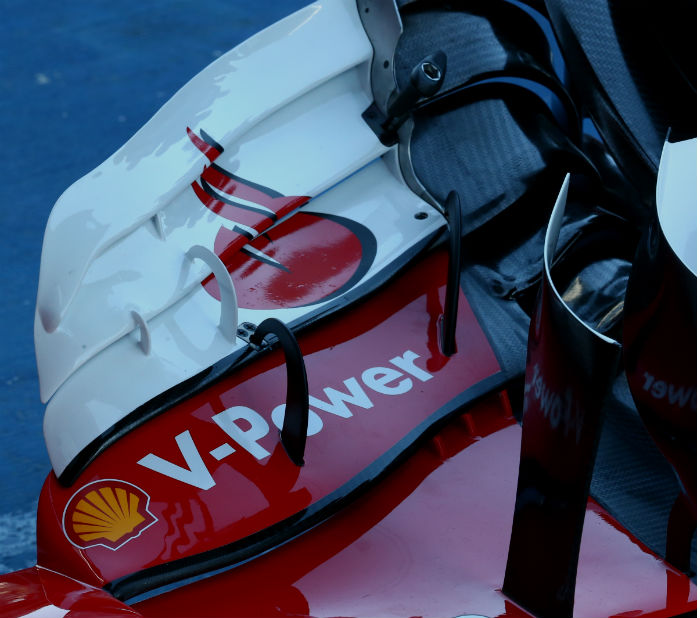
Ferrari arrived in Russia with a new front wing (above). The new design features three upper elements (helpfully painted white), the old version (below) had two larger elements. Note the serrations on the inner edge of the lower of the two white elements on the old spec.
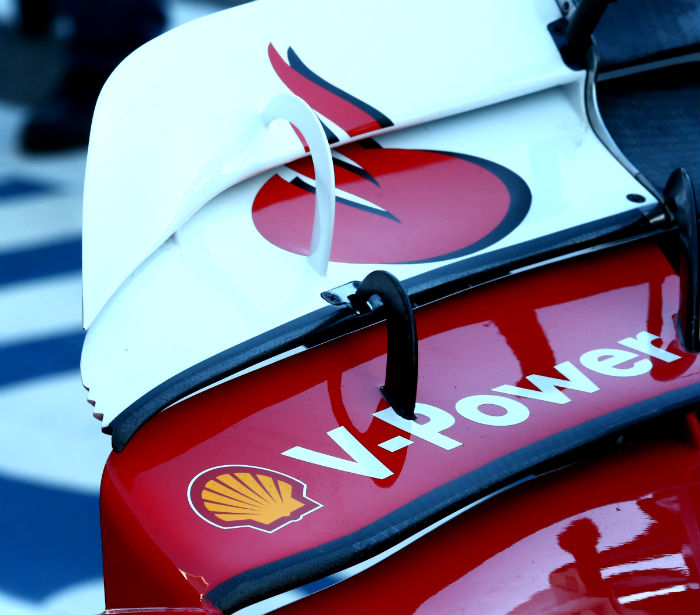
The Ferrari louvred coolers introduced in 2015 are again employed in 2016, it is believed that this is an efficiency gain.
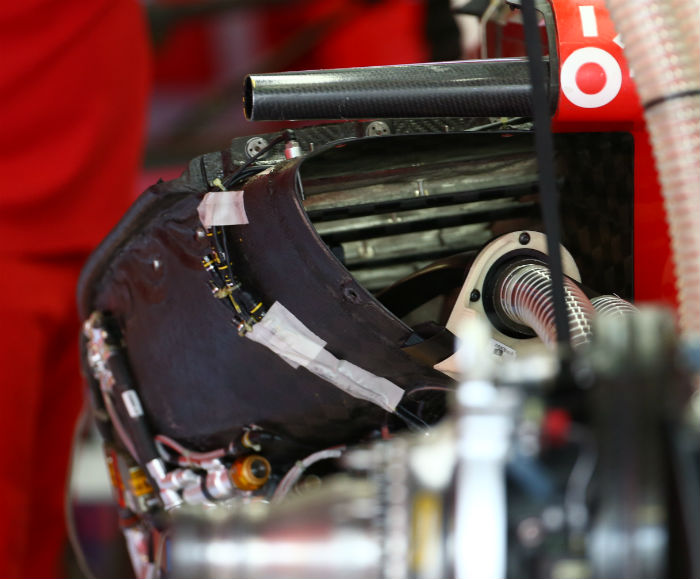
Another look at the Ferrari composite transmission with the rear impact structure partially removed.

A look at the rear brake setup on the SF16-H – note the aerodynamic elements on the inner face.
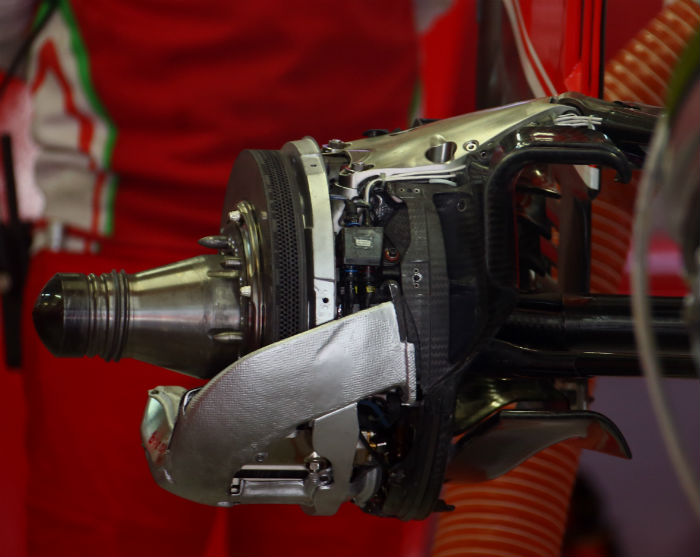
Early in 2016 it was revealed that Ferrari made a significant performance step in mid 2015 by introducing a new combustion technology based on Mahle’s patented Turbulent Jet Ignition.
More than five years of development preceded that crucial phone call to Maranello with the proposal: “We’ve found an interesting new solution for you.” A Mahle press release explains. “Within a few weeks, in spring 2015, we adapted our solution to the Formula 1 requirements, allowing Ferrari to compete in Canada with this solution for the first time,” recollects Fred Türk. Vice President MAHLE Motorsport.
Turbulent Jet Ignition (TJI) utilises a spark-initiated pre-chamber combustion process in an otherwise conventional gasoline engine to achieve fuel economy improvements of up 20%. Existing jet ignition systems involve the creation of hot gas jets from a pre-chamber which are then introduced into the cylinder where they rapidly induce ignition of the main in-cylinder charge. MAHLE’s TJI system is characterised by auxiliary pre-chamber fuelling, small orifices connecting the main and pre-chamber combustion cavities and a very small pre-chamber volume. The smaller orifice size causes turbulence in the hot gas jets which then penetrate deeper into the main combustion chamber and cause a distributed ignition effect. This process then allows extension of knock limits and increased compression ratios (up to 14:1) combined with lower combustion temperatures and reduced throttling / pumping losses to achieve thermal efficiencies in the region of 45%.
MAHLE’s TJI unit replaces the conventional spark plug and can utilise the original PFI or DI fuel system in both naturally aspirated and turbocharged engines. The conventional engine control system can be retained and the system can be operated on readily available, commercial fuels. Strong synergies exist when coupling turbulent jet ignition with engine downsizing at both high and low engine loads through the use of modern variable valvetrain systems.
“The potential is there for this to transfer to mass production vehicles. With this technology, the petrol engine can reach efficiency levels that are usually only achievable with diesel engines,” explains Türk.

Another look at the Ferrari power unit installation, note the triple stack of radiators in the sidepod, something which has been described as a challenge in terms of ducting.
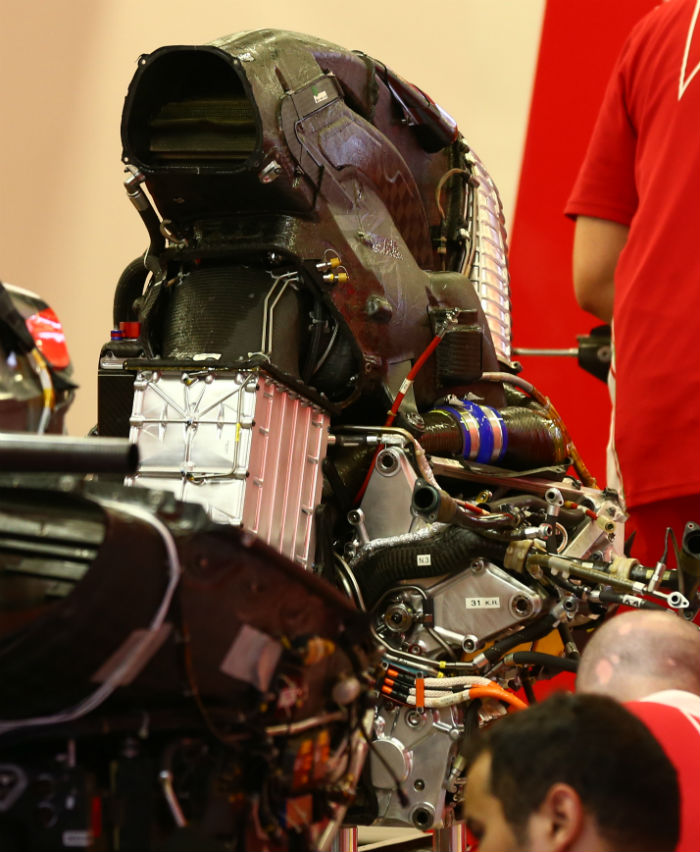
A look at the front end of the Ferrari power unit reveals a charge air cooler at the front of the engine block. The oil tank is on the right hand side of the front of the block.
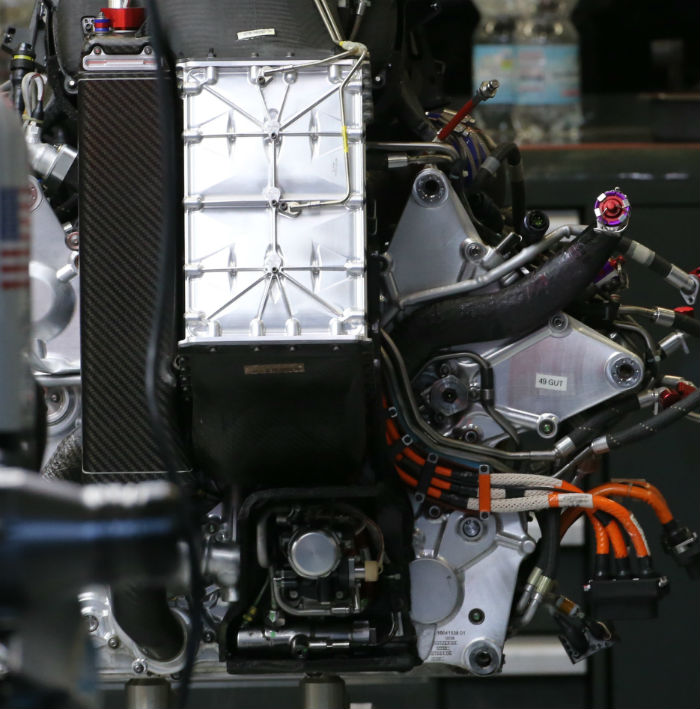
A look at the other side of the power unit with most of its heatshields removed, note the exhaust layout, oil tank and the air filter.
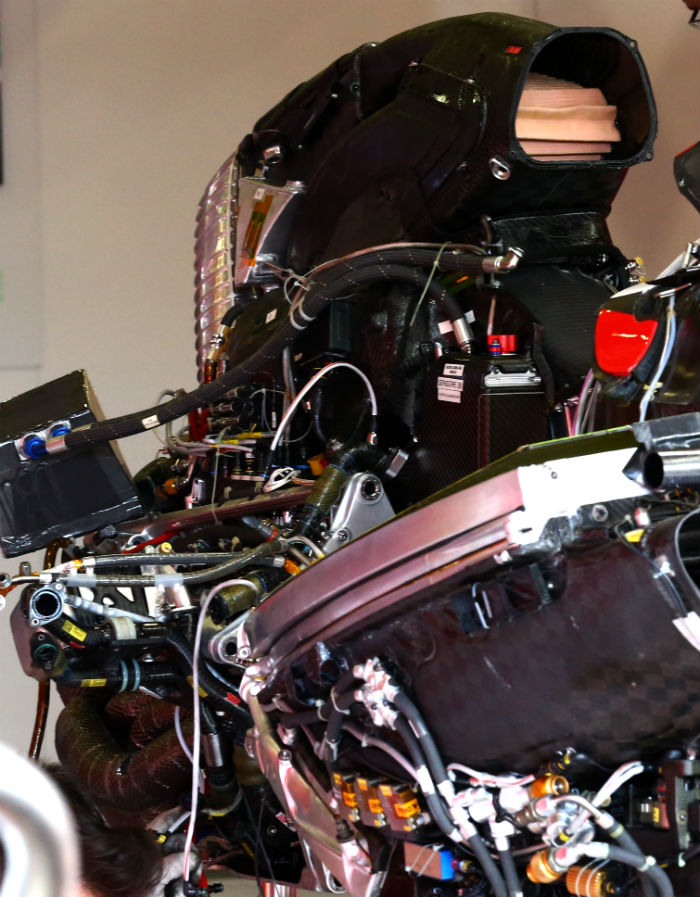
With some of the ducting removed it is possible to see the triangular shape of the air filter on the Ferrari V6.
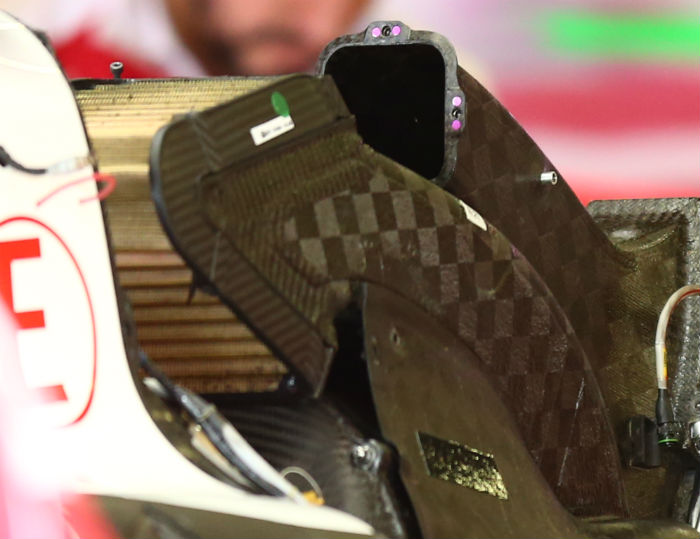
A look inside the cockpit of the Ferrari with the steering wheel removed. Note the bracket supporting the steering column as well as the two rotary switches on the left of the cockpit. The padding around the drivers legs is clear to see as is the name given to this chassis. Finally the new for 2016 high speed camera from Magneti Marelli is clear to see in the centre of the cockpit surround (below)

A rare look at the underside of the front wing of the Ferrari shows the level of complexity of modern Formula 1 aerodynamics (below)
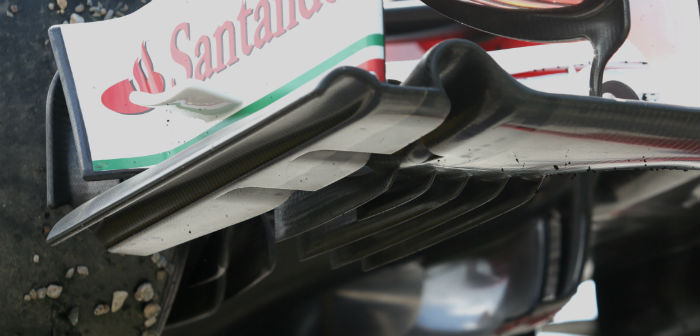
A clean look at the underside of a different specification wing on the same car. Note the trailing edge of the front impact structure.
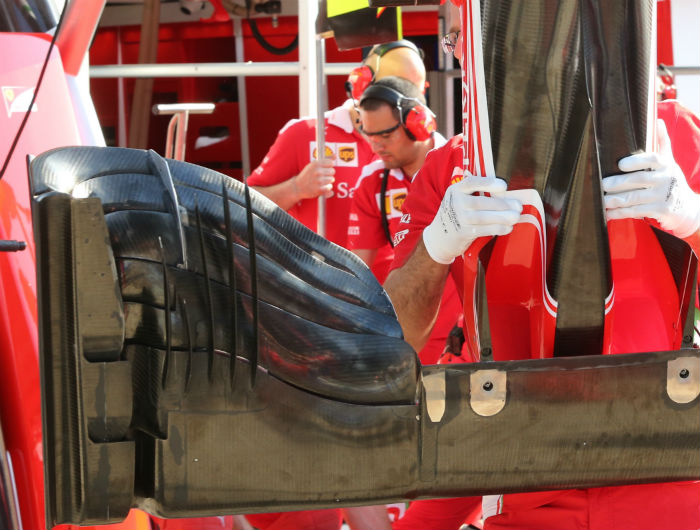
Here we get a glimpse of the front end of the Ferrari transmission, note the internal cover above the input shaft (below)
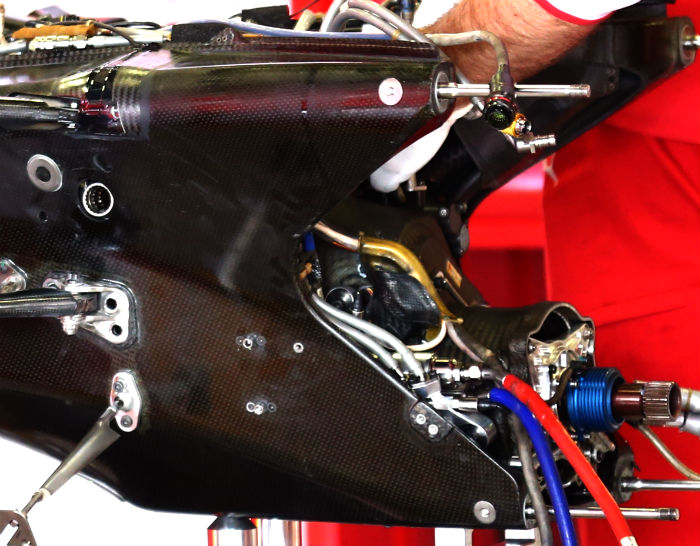
Ferrari uses a number of louvres in the sidepod cooling ducts, making for a more efficient cooling system overall (below).
